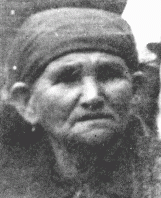You searched for: %E6%98%8E%E5%8D%87%E4%BD%93%E8%82%B288%E3%80%90%E6%89%8B%E5%8A%A8%E8%BE%93%E5%85%A5%E2%88%B6___bet126.net___%E3%80%91%E4%BA%9A%E6%B4%B2%E6%9C%80%E5%A4%A7%E5%8D%9A%E5%BD%A9%E5%85%AC%E5%8F%B8%E5%AE%89%E5%85%A8%E7%A8%B3%E5%AE%9A%E6%9E%81%E9%80%9F%E5%87%BA%E6%AC%BE%E6%9C%89%E4%BF%9D%E9%9A%9C%EF%BC%81
<< Previous | Displaying results 71-80 of 154 for "%E6%98%8E%E5%8D%87%E4%BD%93%E8%82%B288%E3%80%90%E6%89%8B%E5%8A%A8%E8%BE%93%E5%85%A5%E2%88%B6___bet126.net___%E3%80%91%E4%BA%9A%E6%B4%B2%E6%9C%80%E5%A4%A7%E5%8D%9A%E5%BD%A9%E5%85%AC%E5%8F%B8%E5%AE%89%E5%85%A8%E7%A8%B3%E5%AE%9A%E6%9E%81%E9%80%9F%E5%87%BA%E6%AC%BE%E6%9C%89%E4%BF%9D%E9%9A%9C%EF%BC%81" | Next >>
-
Dr. Robert Ritter visits a "Gypsy camp"
PhotoDr. Robert Ritter talks to several residents in a Zigeunerlager ("Gypsy camp"). Hamburg, Germany, 1940. During the Nazi era, Dr. Robert Ritter was a leading authority on the racial classification of people pejoratively labeled “Zigeuner” (“Gypsies”). Ritter’s research was in a field called eugenics, or what the Nazis called “racial hygiene.” Ritter worked with a small team of racial hygienists. Among them were Eva Justin and Sophie Ehrhardt. Most of the people whom Ritter studied and…

-
Eva Justin interviews a Romani woman interned in a "Gypsy camp"
PhotoA color photograph of Eva Justin interviewing a Romani woman interned in a "Gypsy camp." Vienna, Austria, 1940. During the Nazi era, Dr. Robert Ritter was a leading authority on the racial classification of people pejoratively labeled “Zigeuner” (“Gypsies”). Ritter’s research was in a field called eugenics, or what the Nazis called “racial hygiene.” Ritter worked with a small team of racial hygienists. Among them were Eva Justin and Sophie Ehrhardt. Most of the people whom Ritter studied and…

-
A family interned in a "Gypsy camp"
PhotoA family stands outside of their wagon while interned in a Zigeunerlager ("Gypsy camp"). In the background, children are crowded around Eva Justin. Justin worked for the Center for Research on Racial Hygiene and Demographic Biology. Schleswig-Holstein, Germany, 1938. During the Nazi era, Dr. Robert Ritter was a leading authority on the racial classification of people pejoratively labeled “Zigeuner” (“Gypsies”). Ritter’s research was in a field called eugenics, or what the Nazis called…

-
Zdziecioł (Zhetel)
ArticleThe Nazis occupied Zdziecioł (Zhetel), Poland in 1941. Learn more about the city and ghetto during World War II.
-
Japanese American Relocation
ArticleLearn more about the forcible relocation of some 120,000 people of Japanese descent living in the US to “relocation centers.”

-
Adolf Hitler: 1919-1924
ArticleAdolf Hitler established himself as absolute Führer, or leader, of the Nazi Party by 1921. Learn more about Hitler in the years 1919-1924.

-
Writing the News
ArticleShortly after taking power in January 1933, Adolf Hitler and the Nazis took control of German newspapers, detailing how the news was to be reported.

-
SS and Police
ArticleDuring World War II, SS and police leaders played a key role in the mass murder of Europe’s Jews. Learn how Himmler combined the SS and police to create a radical weapon for the Nazi regime.

-
Oranienburg
ArticleThe Oranienburg concentration camp was established as one of the first concentration camps in Nazi Germany on March 21, 1933. Learn more

-
Terez Goldberger Kalman
ID CardTerez came from a religious Jewish family. She and her husband, Samuel, raised eight children in Satoraljaujhely, in northeastern Hungary. The Kalmans lived on the outskirts of the city, and in the 1920s they ran a canteen for the soldiers who lived in the nearby barracks. The Kalmans were proud Hungarians; one of their sons had died in World War I. 1933-39: Since Samuel died a few years ago, Terez has been alone here in her house in Satoraljaujhely. Many of her children live nearby, though, so her home…

